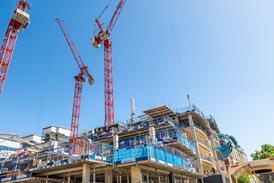- News

All the latest updates on building safety reformRegulations latest
- Focus
Close menu
- Home
- News
- Focus
- Comment
- Events
- CPD
- Building the Future
- Jobs
- Data
- Subscribe
- Building Boardroom
Tender price forecast: Hope amid uncertainty
By Davis Langdon & Everest and Davis Langdon & Everest2002-05-03T00:00:00
A mood of uncertainty prevails, with modest rises in tender prices and new orders, lower housing starts and a decline in infrastructure work. But the Budget, reports Davis Langdon & Everest, has strengthened hopes for robust recovery
This is PREMIUM content
available to Building Boardroom and Building subscribers only
You are not currently logged in. Building Boardroom Members and Subscribers may LOGIN here.
Become a Building Boardroom Member

to read this report now, plus have unlimited access to:
- Exclusive research and client insight to support your strategic planning
- Benchmark reports, and proven tools to aid your business development
- Attend bespoke community events…plus much more
Alternatively…
Become a Building subscriber
to gain access to building.co.uk for the latest news, expert analysis & comment from industry leaders, plus data and research.
Already a Boardroom member? Log in here.


















